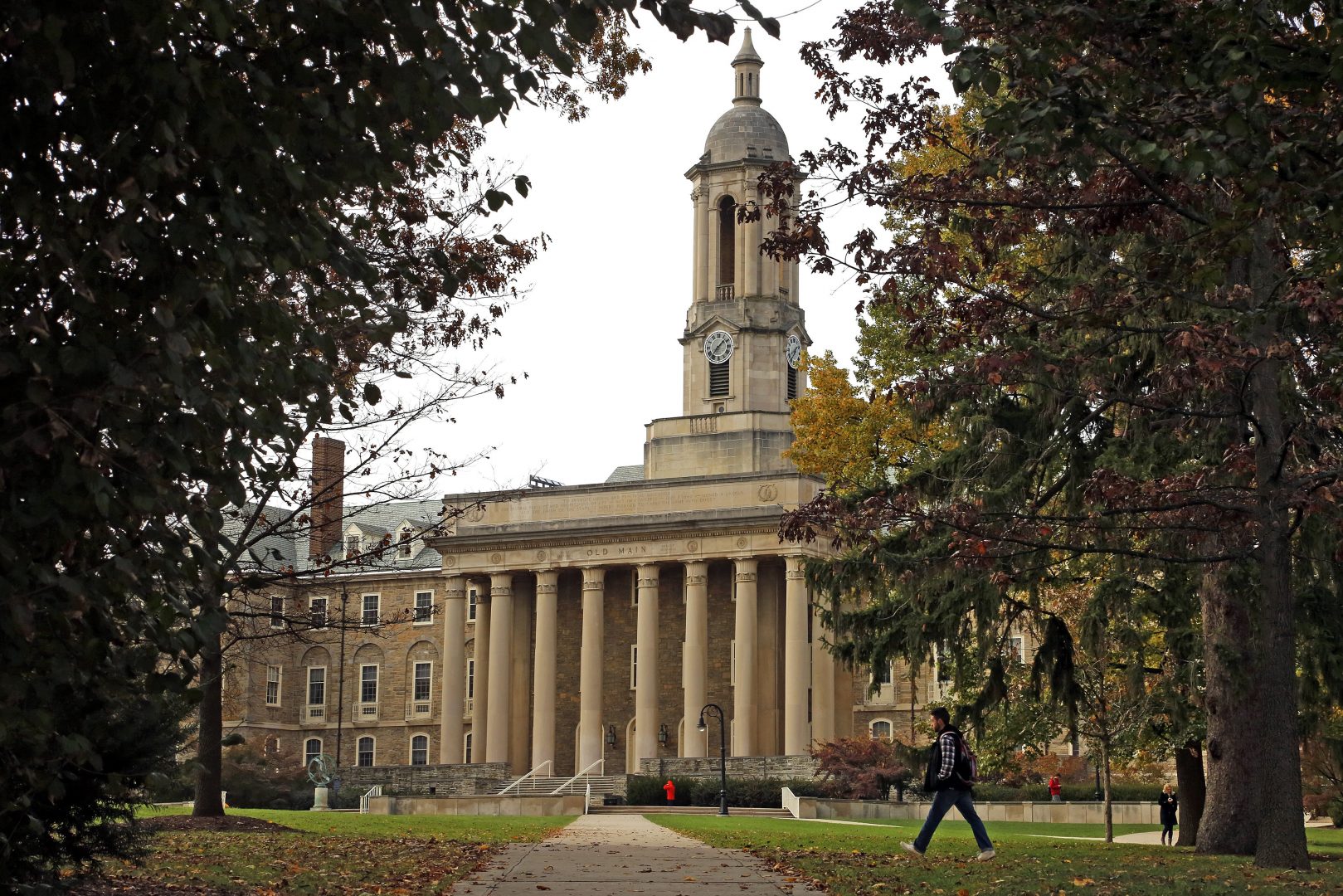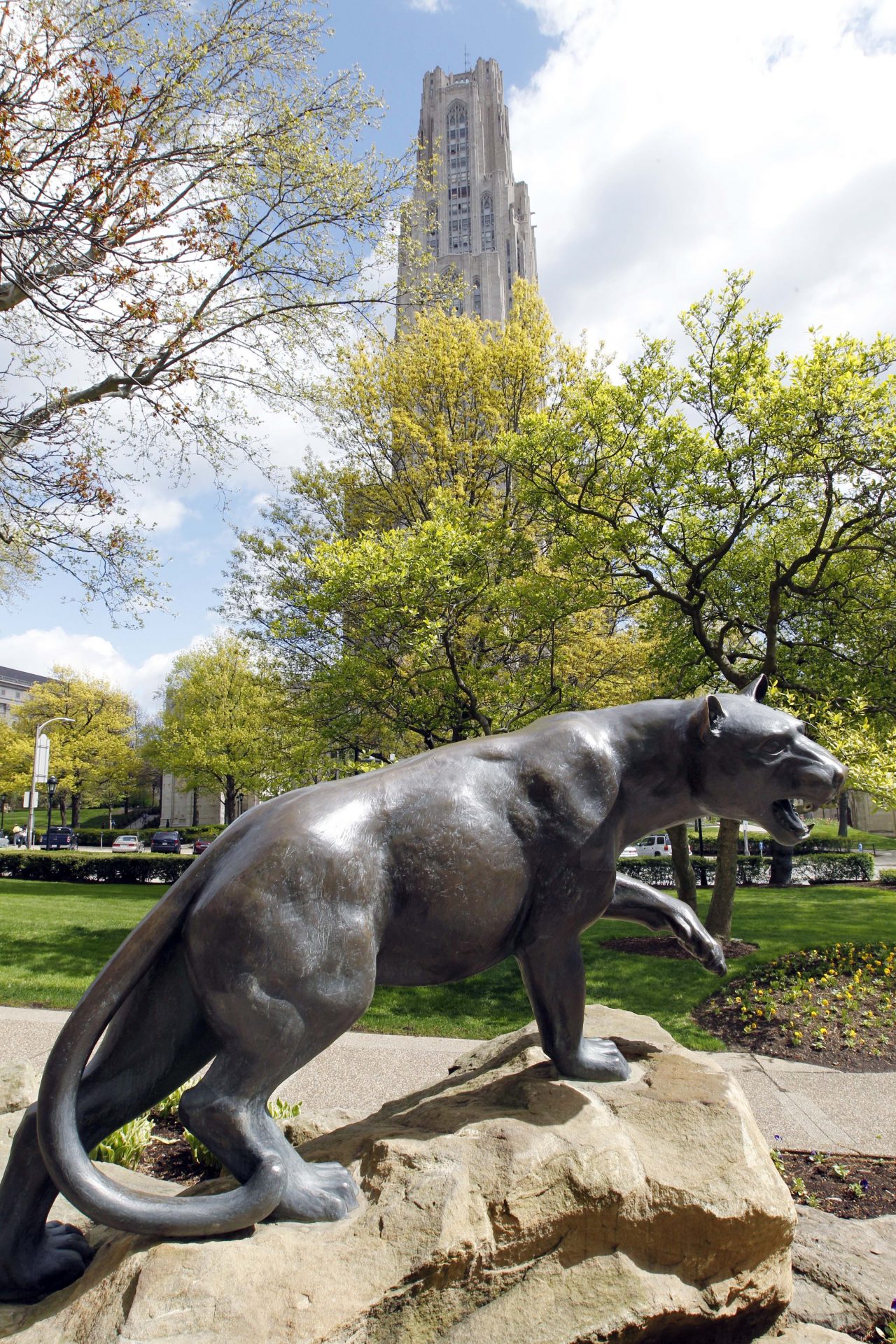
Old Main on the Penn State University main campus in State College.
Gene J. Puskar / AP Photo

Old Main on the Penn State University main campus in State College.
Gene J. Puskar / AP Photo

Gene J. Puskar / AP Photo
Old Main on the Penn State University main campus in State College.
(Harrisburg) — The presidents at Penn State, Pitt and Temple are looking to the state to make it possible for them to announce a tuition freeze for their students for next year.
All three leaders said that was their desired goal in arriving at the amount of state funding their schools were requesting for 2019-20.
At Lincoln University, the other state-related institution in Pennsylvania, receiving the money it seeks from the state would enable it to discount the tuition for more in-state students as well as increase its faculty and staff to serve its growing student enrollment.
Combined, these four universities are looking to lawmakers to find a total of nearly $600 million in the state’s general fund budget to support their operations.
All of heads of these state-related institutions shared in their testimony to the Senate Appropriations Committee on Tuesday a recognition of the role that tuition plays in the rising levels of loan debt their students are amassing.
But they also made it clear that there is a correlation between Pennsylvania having the nation’s first or second highest average student debtload and the state funding their institutions have received so far this century.
“Right now, the appropriations for Penn State are right about what it was in 2000,” said university President Eric Barron. “I could drop tuition by 15 percent if [state funding] just kept up with inflation over that period of time.”
He said if appropriations had kept pace with inflation, Penn State’s appropriation would now be well over $400 million.
Instead, in Gov. Tom Wolf’s 2019-20 proposed state budget, Penn State would receive $237.3 million in general support. Wolf proposed flat funding for all four state-related institutions. That means $148.5 million for Pitt, $155.1 million for Temple, and $14.9 million for Lincoln.
Meanwhile, Penn State has requested an increase of $14 million, or 6 percent; Pitt, $11 million or 6.5 percent; Temple $16.8 million or 10.8 percent; and Lincoln, $2.1 million or 14.3 percent.
Along with efforts to control their costs, the university leaders shared other programs they have initiated to keep the cost of an education at their schools within students’ reach.

Keith Srakocic / The Associated Press
A statue representing the “Pitt Panther” mascot of the University of Pittsburgh is seen across the street from the iconic Cathedral of Learning on the University of Pittsburgh campus.
At Pitt, its Chancellor Patrick Gallagher said the university is introducing some new and novel financial aid programs to attract and retain students. Last week, it announced the university will match federal Pell Grants for students eligible to receive this federal aid.
Additionally, it is piloting a program that applies $5,000 toward a graduate’s federal loan balance if they pledge to make monthly contributions back to the fund to make it possible to lower the debt load of future students.
Temple University President Richard Englert said his university is focusing on time to graduation through a “Fly in 4” program designed to help students stay on track to graduate in four years. Temple also offers institutional aid to students and sends them reminders annually of the amount of debt they incurred and what the implications are.
Lincoln’s President Brenda Allen said her university has frozen tuition for the last four or five years to help address the student debt concern. It also has focused attention on helping students, many of whom are the first in their families to attend college, understand the need to take 15 credits a semester for eight semesters to earn their degree in four years.
“For first generation college students understanding that formula is something that’s really very important,” she said. “So having the academic support outside the classroom helps the students make good decisions about staying on course in their program of study.”
Along with tuition freezes for in-state students twice in the last four years, Penn State has a financial literacy center to help students manage their finances. It also has an Open Doors need-based scholarship program a little more than two years ago, Barron said. Already, that program is having an impact. Average student debtloads at the university’s commonwealth campuses has dropped by $2,400 and by $500 for University Park students, he said.
“I think we’re starting to bear some fruit because of the effort to target the problem,” Barron said. Then he brought his answer back to the reason he and the other presidents were sitting there before the panel of state senators. “Only you can help us with the overall sticker price in terms of what that state support is like while we cut but don’t want to lose quality.”

Get insights into WITF’s newsroom and an invitation to join in the pursuit of trustworthy journalism.
The days of journalism’s one-way street of simply producing stories for the public have long been over. Now, it’s time to find better ways to interact with you and ensure we meet your high standards of what a credible media organization should be.